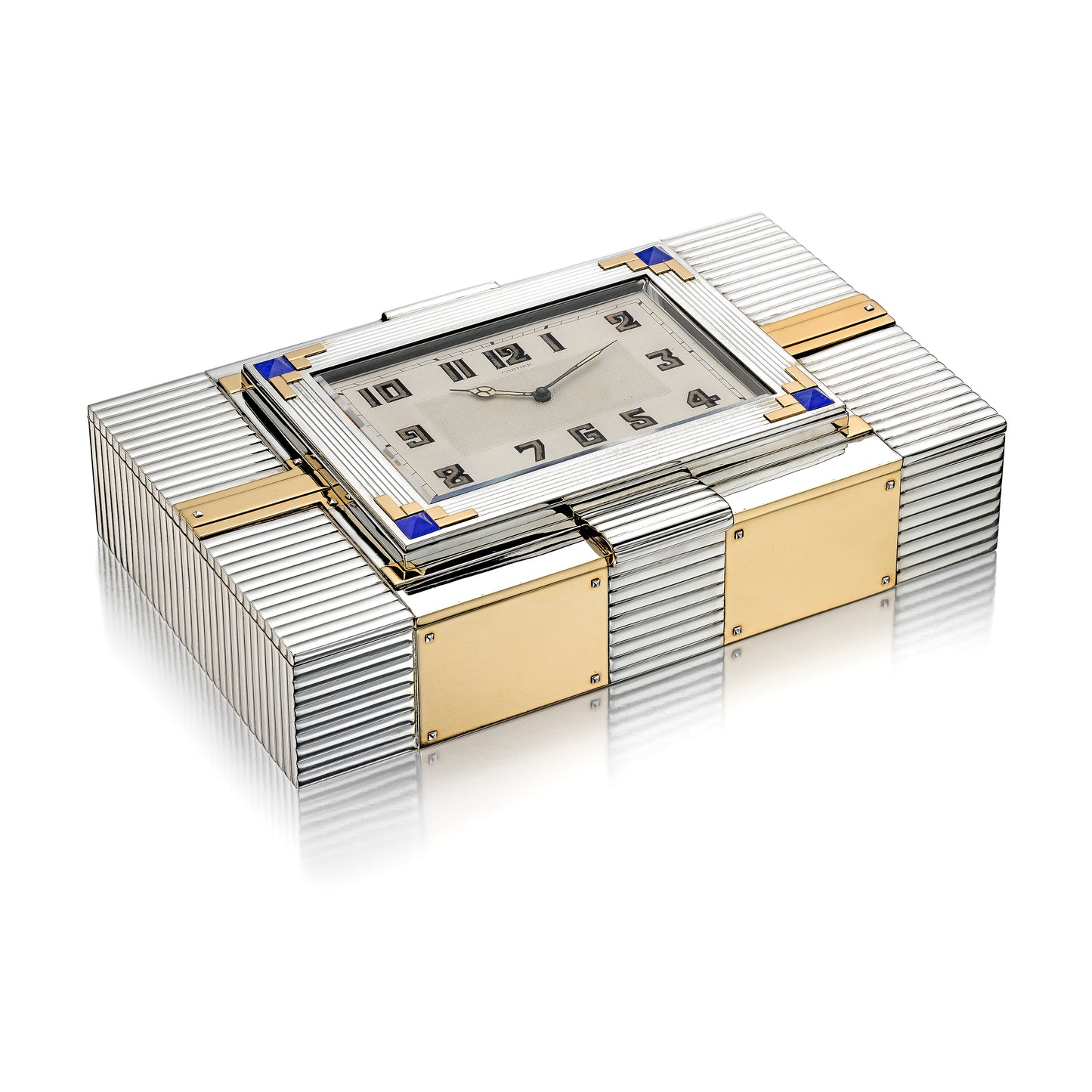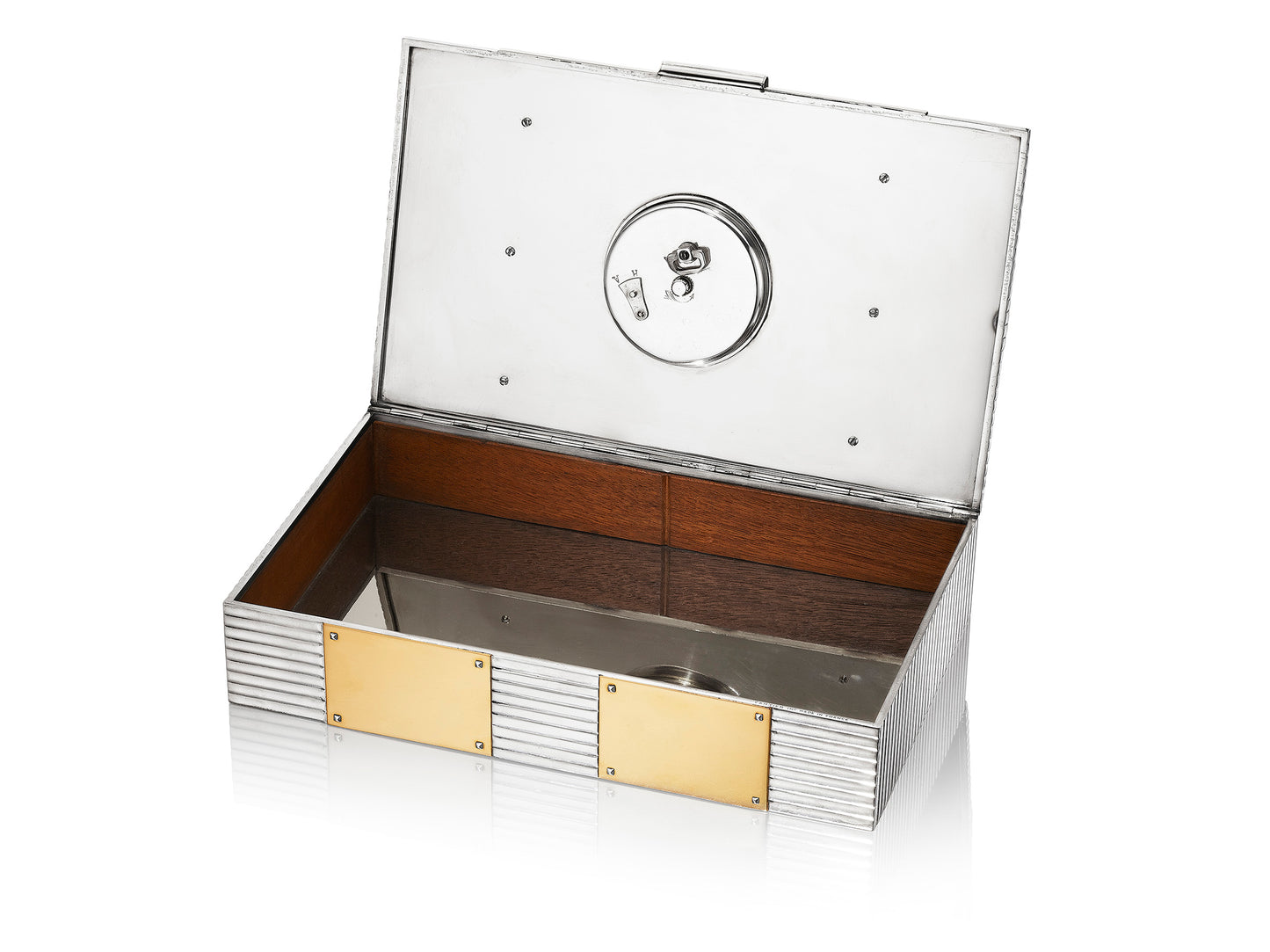ART MODERNE DESK CLOCK AND BOX BY CARTIER, PARIS, CIRCA 1935
ART MODERNE DESK CLOCK AND BOX BY CARTIER, PARIS, CIRCA 1935
SOLD
A rectangular box applied with alternating ribbed and smooth sections, accented by square-shaped studs and lapis lazuli pyramids, the top featuring a rectangular clock with slivered guilloché dial, Arabic numerals and cream enamel hour and minute hands, the interior opens to reveal a large storage box with wooden panels on the side; mounted in silver and gold; manual movement, 8 days
- Signed Cartier Inc, Made in France; Movement signed European Watch & Clock Co., movement no. 1598
- Measurements: 10 x 6 x 2 inches
Additional cataloguing
Biography
Cartier was founded in Paris in 1847 by Louis-François Cartier. His three grandsons, Louis, Pierre, and Jacques, built the house into a famous international jewelry empire serving royalty, Hollywood stars, and socialites. Cartier has created some of the most important jewelry and objects of art of the twentieth century with many iconic designs such as mystery clocks, Tutti Frutti jewelry and the Panthère line. In 1983, The Cartier Collection was established with the objective of acquiring important pieces that trace the firm’s artistic evolution. Today, Cartier has 200 stores in 125 countries.
Significance
The beginning of the twentieth century brought significant changes in society and advances in manufacturing. Optimized workflow and new technology increased production, made cars and trains faster, and allowed buildings to be built taller. The relationship between man and machine impacted art and design. Stripping down the decorative excess of earlier artists, a group of designers emerged who adopted a mechanical aesthetic later known as Art Moderne, or Streamline Moderne. This new style embraced the role of machinery in modern life, foregoing naturalistic ornamentation and using materials that played on volume using light and shadow. Many independent jewelers adopted this approach and it influenced the large jewelry firms, including Cartier whose designers were keenly aware of the rise of modernity.
From 1847, Cartier excelled in fine jewelry, but they also provided an array of objects specifically targeted to men, including boxes, clocks, brushes, desk sets, cigarette cases and cigar boxes. This market grew tremendously after World War I as soldiers returned from war with increased cash and an interest in travel and luxury. Originally made to hold cigars, this clock and box is an important example of the Art Moderne style and a functional men’s accessory. In this rectangular box the play of light and shadow was skillfully used in the flat and ribbed gold and silver surfaces evoking the streamlined grill of an Art Deco car, or similar machine of the era. The clock set in the center of the box is accented at each corner with lapis lazuli pyramids, appearing like nuts and bolts to secure the clock panel to the box. Around each of the pyramids, gold and silver panels in square and rectangular shapes layer to create strong geometric patterns.
Cartier devoted an entire department, called S for silver, to create “elegant gifts and everyday consumer goods.” With unlimited imagination they produced a variety of functional and beautiful objects. The design and construction of this cigar box is impeccable and elegant. It embodies the clean mechanical aesthetic of the Art Moderne movement while also providing the function of a clock and box. This piece would be an important addition for any collector.







